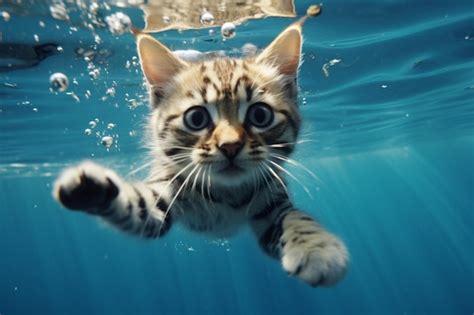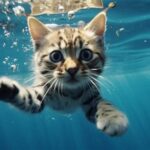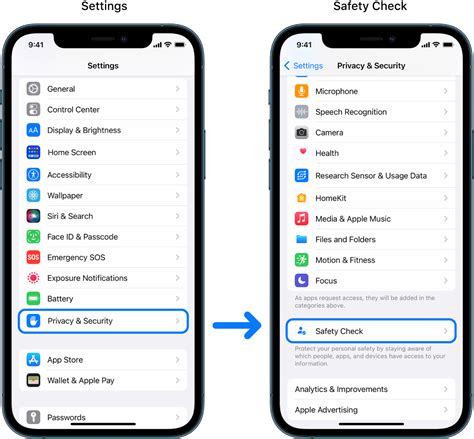
AI-generated videos of cats performing Olympic-level diving feats have captivated the internet, showcasing the rapidly advancing capabilities and sometimes bizarre outputs of artificial intelligence. These whimsical animations, created using AI models, depict felines executing complex dives with apparent grace and precision, garnering millions of views and sparking conversations about the potential and pitfalls of AI technology.
The viral sensation highlights the increasing accessibility and sophistication of AI tools capable of generating realistic and imaginative content. “I didn’t realize I needed to see cats doing Olympic diving until just now,” commented one user, reflecting the widespread amusement and fascination with these AI-created scenarios. The videos showcase not only the technical prowess of AI but also its ability to tap into the internet’s insatiable appetite for feline-related content.
While the animated clips are purely for entertainment, they underscore the significant strides being made in AI-driven animation and video generation. These advancements have implications across various industries, from entertainment and marketing to education and scientific research.
The Rise of AI-Generated Content
The creation of these feline diving videos is a testament to the evolution of AI technology, particularly in the fields of generative models and computer vision. Generative AI models, such as Generative Adversarial Networks (GANs) and diffusion models, are trained on vast datasets of images and videos, enabling them to create new, original content that mimics the style and characteristics of the training data.
In the case of these viral videos, AI algorithms were likely trained on datasets of both cat videos and Olympic diving footage. By learning the patterns and movements associated with each, the AI was able to synthesize new videos depicting cats performing dives with a surprising degree of realism. The technology can extrapolate and imagine scenarios that don’t exist in the real world, blending the familiar image of cats with the athletic discipline of Olympic diving.
“It’s really impressive how far AI has come,” noted an AI researcher familiar with generative models. “Just a few years ago, creating something like this would have required a team of animators and special effects artists. Now, it can be done with a relatively simple AI model.”
The accessibility of AI tools is also a key factor in the proliferation of AI-generated content. Platforms like Midjourney, DALL-E 2, and Stable Diffusion provide users with user-friendly interfaces for creating images and videos from text prompts. This democratization of AI technology has empowered individuals with limited technical expertise to create compelling and imaginative content, contributing to the explosion of AI-generated media across the internet.
The Appeal of Cats and the Absurd
The popularity of the AI-generated cat diving videos can be attributed to two primary factors: the internet’s enduring fascination with cats and the inherent humor in the absurd juxtaposition of cats with Olympic-level athleticism.
Cats have long been a staple of internet culture, captivating audiences with their quirky personalities, adorable antics, and meme-worthy behavior. Numerous studies have explored the reasons for this phenomenon, suggesting that cats’ independence, unpredictable nature, and expressive faces make them inherently appealing to online audiences. The appeal of cat videos taps into basic human emotions, triggering feelings of amusement, affection, and even empathy.
The addition of Olympic diving to the mix further amplifies the videos’ comedic impact. The incongruity of seeing cats, known for their agility and grace but not necessarily for their precision or competitive spirit, performing complex dives creates a sense of delightful absurdity. The videos play on the unexpected, challenging viewers’ expectations and eliciting laughter.
“It’s the unexpectedness of it all that makes it so funny,” said a media analyst specializing in internet trends. “We’re used to seeing cats doing silly things, but we’re not used to seeing them doing Olympic-level athletic feats. The combination is just inherently hilarious.”
Ethical Considerations and Concerns
While the AI-generated cat diving videos are primarily harmless entertainment, they also raise important ethical considerations and concerns about the potential misuse of AI technology.
One concern is the potential for AI to be used to create deepfakes – manipulated videos that convincingly depict individuals saying or doing things they never actually said or did. Deepfakes have the potential to be used for malicious purposes, such as spreading misinformation, damaging reputations, or even inciting violence.
Another concern is the impact of AI on the creative industries. As AI models become increasingly capable of generating high-quality content, there is a risk that they could displace human artists, writers, and musicians. This could lead to job losses and a devaluation of human creativity.
Additionally, there are concerns about copyright and ownership of AI-generated content. It is unclear who owns the copyright to content created by AI models – the user who provided the prompt, the developer of the AI model, or the AI model itself? This ambiguity could lead to legal disputes and uncertainty about the rights and responsibilities of creators and users of AI-generated content.
Furthermore, the environmental impact of training large AI models is a growing concern. Training these models requires vast amounts of computing power, which consumes significant amounts of energy. This energy consumption contributes to greenhouse gas emissions and exacerbates climate change.
The Future of AI-Generated Entertainment
Despite these concerns, the future of AI-generated entertainment is bright. As AI technology continues to evolve, we can expect to see even more sophisticated and imaginative AI-generated content. This content will likely be personalized and interactive, providing users with unique and engaging experiences.
AI could also revolutionize the way movies and video games are made. AI could be used to generate realistic characters, create stunning visual effects, and even write compelling storylines. This could significantly reduce the cost and time required to produce high-quality entertainment.
However, it is important to address the ethical concerns and potential risks associated with AI-generated content. We need to develop regulations and guidelines to ensure that AI is used responsibly and ethically. We also need to invest in education and training to help people adapt to the changing landscape of the creative industries.
The AI-generated cat diving videos are just a glimpse of what is possible with AI technology. As AI continues to evolve, we can expect to see even more amazing and unexpected creations. It is up to us to ensure that AI is used in a way that benefits society as a whole.
Expanded Context and Analysis
The viral success of the AI-generated cat diving videos reflects a broader trend of increasing public awareness and engagement with artificial intelligence. While AI has been a subject of research and development for decades, recent advancements in machine learning and deep learning have made AI more accessible and impactful than ever before.
The ability of AI to generate realistic and creative content has captured the imagination of people around the world, leading to a surge in interest in AI-related topics. This interest is fueled by the proliferation of AI-powered tools and applications in various domains, including entertainment, healthcare, finance, and transportation.
The cat diving videos also highlight the importance of humor and novelty in driving online engagement. In a world saturated with information and entertainment, content that is both funny and unexpected has a greater chance of capturing attention and going viral. The videos’ success demonstrates the power of combining AI technology with creative ideas to produce content that resonates with a wide audience.
Moreover, the videos serve as a reminder of the importance of critical thinking and media literacy in the age of AI. As AI-generated content becomes increasingly realistic, it will become more difficult to distinguish between authentic and synthetic media. This underscores the need for individuals to develop critical thinking skills and media literacy skills to evaluate the credibility and authenticity of information they encounter online.
The ethical considerations raised by the cat diving videos are not unique to this particular example but are relevant to the broader field of AI. As AI becomes more powerful and pervasive, it is essential to address the ethical implications of its use and development. This includes considering issues such as bias, fairness, transparency, and accountability.
Broader Implications
The phenomenon of AI-generated cat diving videos, while seemingly frivolous, offers valuable insights into the evolving relationship between humans and artificial intelligence. It demonstrates the potential of AI to generate creative and engaging content, while also highlighting the ethical challenges and societal implications that need to be addressed.
The videos serve as a microcosm of the broader AI landscape, reflecting both the opportunities and the risks associated with this transformative technology. As AI continues to advance, it is crucial to engage in open and informed discussions about its potential impact on society and to develop strategies for ensuring that AI is used in a way that benefits humanity as a whole.
The cat diving videos also underscore the importance of creativity and innovation in the age of AI. While AI can automate many tasks and generate content efficiently, it cannot replicate the human capacity for imagination, intuition, and critical thinking. In a world increasingly shaped by AI, it is essential to cultivate these uniquely human skills to create value and drive progress.
In-Depth Analysis of AI Techniques Used
To create such AI generated contents as “AI’s Feline Olympic Diving”, several AI techniques can be utilized together. The techniques can be broken down as follows:
- Generative Adversarial Networks (GANs): GANs consist of two neural networks, a generator, and a discriminator. The generator creates new content (images or videos), while the discriminator evaluates how realistic that content is. Through iterative training, the generator learns to produce content that can fool the discriminator, resulting in highly realistic output.
- Diffusion Models: Diffusion models work by gradually adding noise to data until it becomes pure noise, then learning to reverse this process to generate new data from the noise. This process often results in high-quality and diverse outputs, making them suitable for generating complex scenes like cats diving.
- Computer Vision: Computer vision techniques are used to analyze and understand existing videos of cats and Olympic divers. These techniques include object detection (identifying cats and divers), pose estimation (tracking their movements), and semantic segmentation (understanding the context of the scene).
- Motion Capture and Animation: Motion capture technology can be used to record the movements of human divers, which can then be transferred to the AI model to guide the animation of the cats. This ensures that the cat’s diving movements are realistic and mimic those of professional divers.
- Reinforcement Learning: Reinforcement learning can be used to train the AI model to perform specific tasks, such as executing a perfect dive. The AI model is rewarded for achieving certain goals (e.g., maintaining balance, performing specific maneuvers) and penalized for errors, gradually learning the optimal way to perform the dive.
- Text-to-Video Generation: Some AI models can generate videos directly from text prompts. For example, a user could input the prompt “a cat doing a perfect swan dive,” and the AI model would generate a video based on this description.
- Image and Video Editing Techniques: After generating the initial video, various image and video editing techniques can be used to refine the output and enhance its realism. This may include adding special effects, adjusting the lighting and colors, and smoothing out any imperfections.
Frequently Asked Questions (FAQ)
Q1: How are these AI-generated cat diving videos created?
A1: These videos are typically created using generative AI models, such as GANs or diffusion models, trained on large datasets of cat videos and Olympic diving footage. These models learn to synthesize new videos depicting cats performing dives with varying degrees of realism. Sometimes, text-to-video AI models are used, where the AI generates the video based on a text prompt.
Q2: Are these videos real?
A2: No, these videos are not real. They are entirely created by artificial intelligence and do not feature actual cats performing Olympic dives. They are purely for entertainment purposes.
Q3: What are the ethical concerns associated with AI-generated content like this?
A3: While seemingly harmless, these videos raise concerns about deepfakes, potential misuse of AI for misinformation, copyright issues related to AI-generated art, the displacement of human artists, and the environmental impact of training large AI models.
Q4: What does this trend say about the future of AI and entertainment?
A4: This trend demonstrates the increasing sophistication and accessibility of AI tools for generating creative content. It suggests a future where AI plays a significant role in entertainment, potentially personalizing content and revolutionizing movie and video game production.
Q5: How can I distinguish between real and AI-generated content?
A5: As AI-generated content becomes more realistic, it’s crucial to develop critical thinking and media literacy skills. Look for inconsistencies in details, unnatural movements, or unusual artifacts. Also, verify the source and be skeptical of content that seems too good to be true. Tools for detecting AI-generated content are also emerging, but their effectiveness varies.
Q6: What other applications exist for the AI technology used to create these videos?
A6: The AI technology used to create these videos has a wide range of applications beyond entertainment. It can be used in medical imaging to enhance diagnostic accuracy, in scientific research to simulate complex phenomena, in education to create personalized learning experiences, and in various industries to automate tasks and improve efficiency. The same AI models used for video generation can also be used for creating images, audio, and even text.
Q7: How much training data is required to create such realistic AI-generated content?
A7: The amount of training data required to create realistic AI-generated content varies depending on the complexity of the task and the architecture of the AI model. Generally, larger datasets lead to better results. For example, creating realistic cat diving videos would require thousands of hours of cat videos and Olympic diving footage. The more diverse and comprehensive the training data, the better the AI model will be at generalizing and creating new, realistic content.
Q8: What are the limitations of AI-generated video technology?
A8: While AI-generated video technology has made significant strides, it still has limitations. One limitation is the ability to generate coherent and consistent narratives. AI models often struggle with maintaining continuity over long periods of time, resulting in videos that may seem disjointed or nonsensical. Another limitation is the ability to accurately simulate complex physical interactions. AI models may struggle with generating realistic simulations of fluid dynamics, collisions, and other physical phenomena. Additionally, AI-generated videos may still exhibit artifacts or imperfections that make them easily distinguishable from real videos.
Q9: How is AI-generated content regulated?
A9: The regulation of AI-generated content is still an evolving area. Currently, there are no specific laws or regulations that directly address AI-generated content in many jurisdictions. However, existing laws related to copyright, defamation, and fraud may apply. Some platforms are implementing policies to label AI-generated content and to prevent the spread of misinformation. However, the effectiveness of these measures is still being evaluated. There is ongoing debate about the need for new regulations to address the unique challenges posed by AI-generated content.
Q10: What is the environmental impact of training large AI models?
A10: Training large AI models requires significant amounts of computing power, which consumes vast amounts of energy. This energy consumption contributes to greenhouse gas emissions and exacerbates climate change. The environmental impact of training AI models depends on the energy source used to power the data centers where the training takes place. Using renewable energy sources can significantly reduce the environmental impact. Researchers are also exploring methods to make AI models more energy-efficient, such as using more efficient hardware and developing more efficient training algorithms.
Q11: How do AI models handle the intricacies of cat anatomy and diving physics?
A11: AI models learn the intricacies of cat anatomy and diving physics by analyzing vast amounts of visual data. Through computer vision techniques, they identify key features and movements of cats, such as their body proportions, joint articulations, and muscle dynamics. They also learn to recognize patterns and relationships between these features and the physics of diving, such as trajectory, rotation, and impact. By training on a diverse dataset of cat videos and diving footage, AI models can develop a deep understanding of these complex systems and generate realistic simulations.
Q12: Can AI be used to generate videos of other animals doing human activities?
A12: Yes, AI can be used to generate videos of other animals doing human activities. The same techniques used to create the cat diving videos can be applied to other animals, such as dogs, birds, and even mythical creatures. The key is to train the AI model on a dataset that includes both animal videos and videos of humans performing the desired activity. The more diverse and comprehensive the training data, the more realistic the AI-generated videos will be.
Q13: How does AI ensure that the cat diving videos are safe and not harmful?
A13: AI itself cannot ensure the safety of the content it generates. That is the responsibility of the developers and users of the AI model. Developers should implement safeguards to prevent the AI model from generating content that is harmful, offensive, or misleading. Users should also be aware of the potential risks and use AI responsibly. In the case of the cat diving videos, the content is purely for entertainment purposes and does not depict any real animals being harmed. However, it is important to be mindful of the potential for AI to be used to create more harmful content and to take steps to mitigate those risks.
Q14: What are the potential benefits of using AI to create entertainment content?
A14: There are several potential benefits to using AI to create entertainment content. AI can automate many of the tedious and time-consuming tasks involved in content creation, freeing up human artists to focus on more creative and strategic aspects. AI can also generate content that is personalized and tailored to individual preferences, leading to more engaging and enjoyable experiences. Additionally, AI can be used to create content that is impossible or impractical to create using traditional methods, such as simulations of fantastical worlds or recreations of historical events.
Q15: How does the AI handle generating the audio for these videos?
A15: The audio for these videos is often generated using separate AI models that specialize in audio synthesis. These models can generate realistic sound effects, music, and even speech. The audio model can be trained on a dataset of sounds related to cats and diving, such as meows, splashes, and crowd cheers. The AI model can then generate audio that matches the visual content of the video, creating a more immersive and engaging experience.
Q16: What advancements need to happen for AI to create feature-length animated films?
A16: Several advancements are needed for AI to create feature-length animated films. First, AI models need to become better at generating coherent and consistent narratives over long periods. This requires the development of AI models that can understand and reason about complex storylines and character relationships. Second, AI models need to become better at generating realistic and expressive animations. This requires improvements in computer vision, motion capture, and animation techniques. Third, AI models need to become more efficient and scalable. Creating a feature-length animated film requires generating vast amounts of content, which can be computationally expensive. Finally, ethical considerations need to be addressed, such as the potential for AI to displace human artists and the need to ensure that AI-generated content is not biased or harmful.
Q17: Are there any AI tools that allow users to create their own AI-generated videos of cats doing human activities?
A17: Yes, there are several AI tools that allow users to create their own AI-generated videos of cats doing human activities. Some popular tools include RunwayML, DeepMotion, and Synthesia. These tools provide user-friendly interfaces and pre-trained AI models that make it easy to generate videos from text prompts or images. Users can customize the appearance of the cats, the activity they are performing, and the overall style of the video. However, it’s important to note that these tools may have limitations in terms of realism and control, and the quality of the output may vary depending on the complexity of the task and the skill of the user.
Q18: How are intellectual property rights managed for AI-generated content like the cat diving videos?
A18: The management of intellectual property rights for AI-generated content is a complex and evolving issue. Currently, there is no clear consensus on who owns the copyright to content created by AI models. Some argue that the copyright should belong to the user who provided the prompt, while others argue that it should belong to the developer of the AI model. Still others argue that the AI model itself should be considered the author and copyright holder. In the absence of clear legal precedent, many platforms are adopting their own policies to address this issue. These policies typically grant the user the right to use the AI-generated content for personal or commercial purposes, but they may also reserve certain rights for the platform or the developer of the AI model. It is important to carefully review the terms of service of any AI tool before using it to create content, as these terms may specify the intellectual property rights associated with the generated output.
Q19: What measures are in place to prevent the misuse of AI for creating deceptive or harmful content?
A19: Several measures are being developed and implemented to prevent the misuse of AI for creating deceptive or harmful content. These measures include:
- Watermarking and provenance tracking: These techniques involve embedding invisible watermarks in AI-generated content to identify its origin and track its dissemination.
- AI detection tools: These tools use machine learning algorithms to identify AI-generated content and distinguish it from real content.
- Content moderation policies: Platforms are implementing content moderation policies to remove or label AI-generated content that is deceptive, harmful, or violates their terms of service.
- AI ethics guidelines: Organizations are developing AI ethics guidelines to promote responsible and ethical development and use of AI technology.
- Education and awareness campaigns: These campaigns aim to educate the public about the potential risks of AI-generated content and to promote critical thinking and media literacy skills.
- Regulation and legislation: Governments are considering regulations and legislation to address the misuse of AI for creating deceptive or harmful content.
Q20: How are these advancements in AI-generated content influencing the creative industries?
A20: Advancements in AI-generated content are significantly influencing the creative industries. In some ways, AI is augmenting and enhancing human creativity, providing artists with new tools and capabilities. For instance, AI can assist with repetitive tasks, generate variations of designs, and provide inspiration. However, AI is also posing challenges to traditional creative roles. Some artists and designers fear that AI could automate their jobs or devalue their skills. The industry is adapting by exploring new hybrid roles where humans and AI collaborate, focusing on uniquely human skills like emotional intelligence, strategic thinking, and complex problem-solving. Additionally, there’s a growing need for artists and creative professionals to understand and adapt to AI tools to remain competitive in the evolving landscape. The long-term impact is still uncertain but it’s clear that AI is reshaping the creative process and the roles within the industry.









